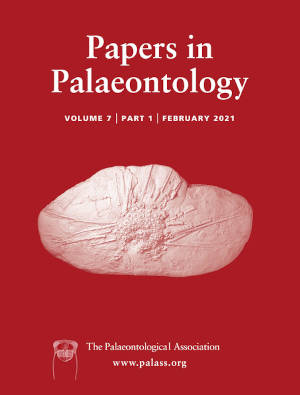Reg. Charity No. 1168330

A diverse group of molluscs from the Cambrian Series 2, Stages 3–4 Xinji Formation of the North China Block (NCB) is described, based on more than 4500 specimens from three well‐studied sections in Shaanxi and Henan provinces, along the southern and southwestern margin of the NCB. Twenty molluscan species are identified, including one bivalve, three stem group gastropods, and 16 additional helcionelloids. Among these, six helcionelloid species are reported from the NCB for the first time, and one new species, Parailsanella luonanensis sp. nov. is proposed. This diverse molluscan fauna shares a large number of species with contemporaneous faunas of South Australia (15), Antarctica (7), Laurentia (6), Siberia (3) and South China (1). Faunal similarities are even greater on a generic level. The striking similarities of the molluscan faunas of North China, South Australia and Antarctica strongly support the hypothesis that the NCB was situated close to Eastern Gondwana, most likely close to South Australia in the Cambrian Epoch 2. In addition, well‐preserved shell attachment muscle scars were observed in the helcionelloid Figurina figurina, with two pairs of symmetrical, continuous, band‐like muscle scars, which are obviously different from the musculature of both gastropods and monoplacophorans. Because of this unique musculature, these characteristic Cambrian cap‐like molluscs are assigned to the Helcionelloida rather than to the Gastropoda or Monoplacophora.
AcknowledgementsWe are grateful to John S. Peel, Thomas M. Claybourn (Uppsala University), Marissa J. Betts (University of New England) and Timothy P. Topper (Swedish Museum of Natural History) for valuable discussions and kind suggestions. Great thanks also go to Xin Wang and Yuan Zhang (Northwest University) for their assistance in fieldwork. This research was supported by funds from the National Key Research and Development Program (Grant 2017YFC0603101), Natural Science Foundation of China (Grants 41621003 and 41890840), the Strategic Priority Research Program of Chinese Academy of Sciences (Grant XDB26000000), 111 Project (D17013), and Swedish Research Council (Grant VR2016‐04610). Three anonymous referees commented on an earlier version of the manuscript.